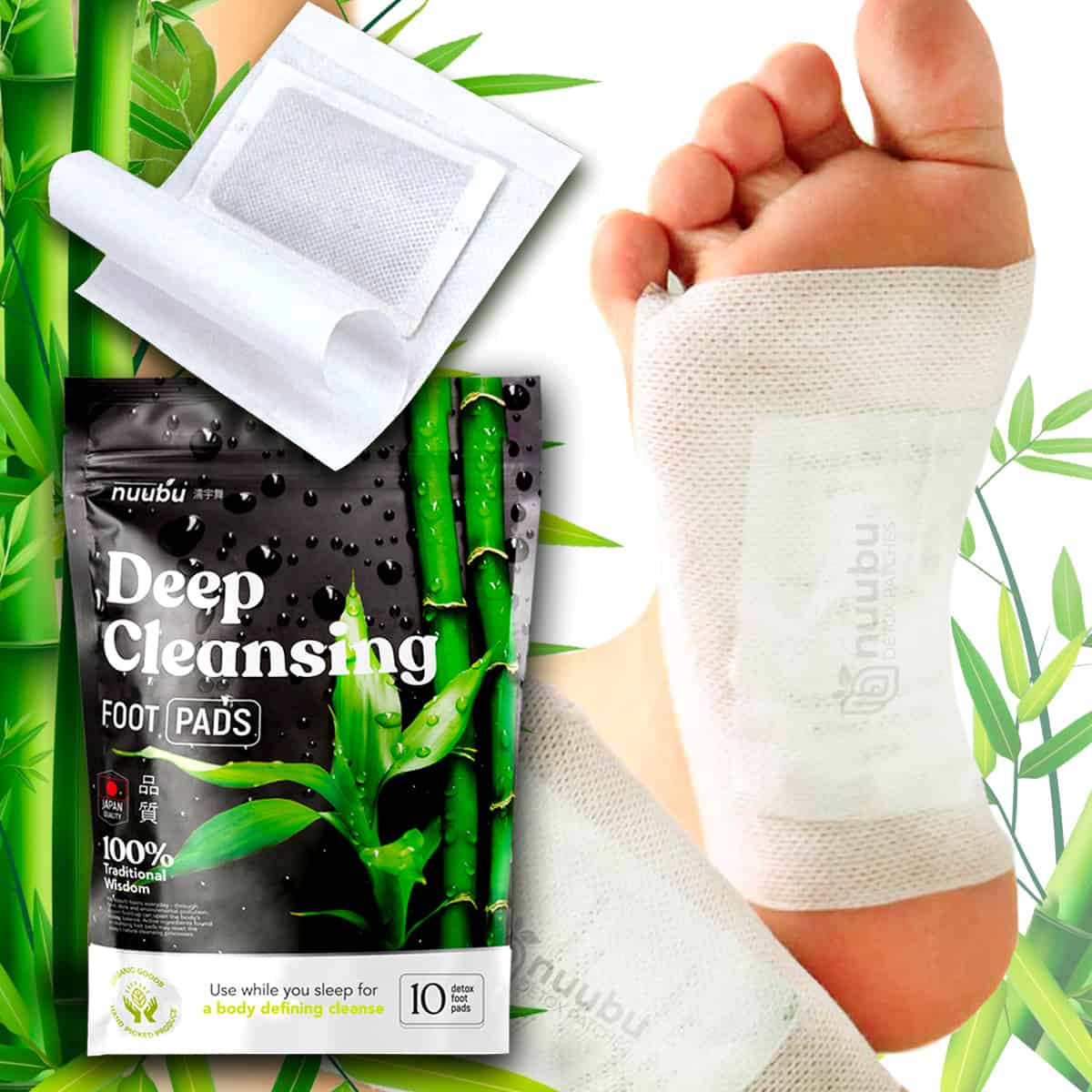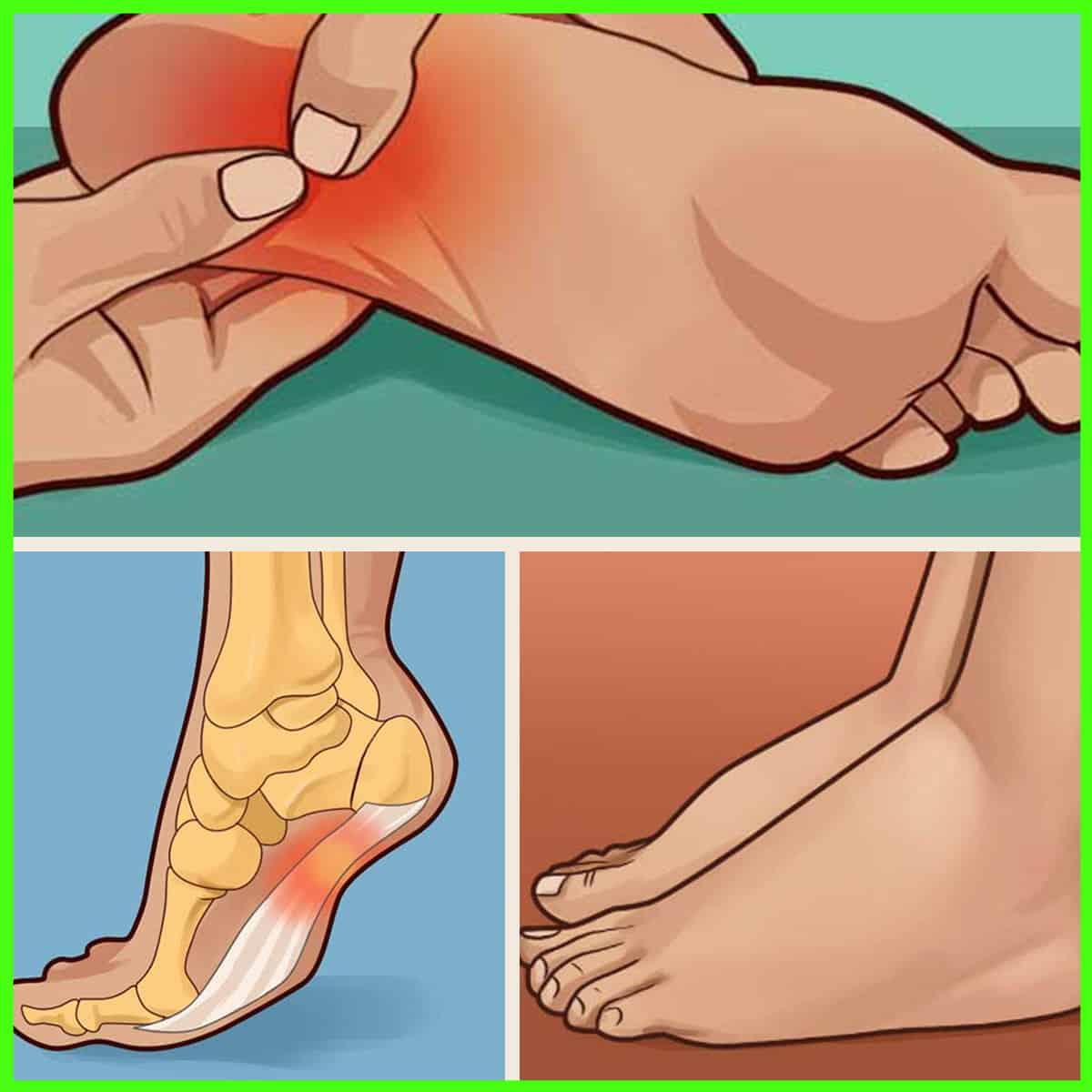Suffering from swollen feet? You’re not alone! A 2021 study revealed that nearly 1 in 5 older adults in the US cope with swelling in feet (a condition known as edema). The study further confirmed that this uncomfortable condition can lead to pain, health complications, and reduced mobility.
If taking multiple medicines for different conditions seems challenging to you, exploring natural remedies can offer potential relief for oedema or feet swelling. Alongside seeking professional medical advice, these home remedies can be your go-to option for treating swollen ankles and feet.
Dive into this guide to discover 14 effective home strategies to help treat swelling in feet and ankles!
Table of Contents:
Home Remedies For Swollen Feet
#1 Detox Foot Pads
Detox foot pads emerge as a superior solution to reduce swelling in feet due to their unique ability to draw out toxins and excess fluids from the body through the soles of the feet. These pads utilize natural ingredients like bamboo vinegar and herbal extracts, which work synergistically to promote detoxification and reduce swelling from ankles and feet.
Explore the best detox foot pads for quick results in relieving foot swelling, stress, and pain. By using them regularly, you can experience gradual relief from swelling, improved blood circulation, and enhanced overall well-being.
Unlike topical treatments or medications that may come with side effects, detox foot pads offer a safe, non-invasive approach to addressing edema. With Nuubu Detox Japanese foot pads, you can conveniently incorporate this effective solution into your daily routine, ensuring comfort and vitality for your feet.

Adhesive pads made of natural ingredients, ensuring holistic wellness. Helps subside pain and inflammation. Eliminate toxins from your body. Combats fatigue.
Check Price#2 Elevating the Feet
Putting your feet up isn’t just about relaxation; it’s a powerful tool to combat swelling!
Elevate your feet above heart level whenever possible to facilitate fluid drainage. You can use pillows, ottomans, or even a sturdy chair. Ensure your feet are well-supported and comfortable during elevation. Elevate for 15-20 minute intervals throughout the day, especially after long periods of sitting or standing. Put up your feet while sleeping using wedges or pillows placed under the mattress.
Taking care of your feet daily goes beyond elevation. You should take care of your feet daily with simple routines such as regular exercise, comfortable shoes, and mindful movement for lasting benefits.
#3 Aloe Vera Gel Application:
Aloe vera gel boasts calming properties due to its anti-inflammatory and analgesic plant steroids, making it one of the best home remedies for cracked feet and swollen areas.
Apply a generous amount of cool aloe vera gel directly to the swollen area. Massage gently for improved absorption. Repeat several times a day for maximum relief.
Bonus tip: Store your aloe vera gel in the refrigerator for an extra cooling effect! Remember, while aloe vera offers soothing comfort, for persistent swelling, consulting a doctor is crucial.
#4 Compression Socks
Compression socks can be your secret weapon to combat edema! By applying gentle pressure, they help squeeze excess fluid away, alleviating swelling and discomfort.
Compression socks come in various strengths and sizes. Consult a doctor or healthcare professional to ensure a perfect fit and appropriate compression level. Look for socks made from breathable, comfortable materials like nylon or spandex. Avoid tight bands or seams that could irritate.
Start with shorter wear times (2-3 hours) and gradually increase as tolerated. Wear them during the day, not while sleeping. Elevate your feet while wearing them for extra effectiveness.
#5 Warm Water Soaks
You can get rid of feet swelling with a warm water foot soak. This simple remedy promotes blood circulation and brings relief to tired, achy feet.
Fill a basin with warm water (comfortable, not hot!) and add a handful of Epsom salts for extra muscle relaxation. You can also incorporate a few drops of calming essential oils like lavender or peppermint. Sit comfortably, submerge your feet for 15-20 minutes, and let the warmth work its magic. Gently wiggle your toes to encourage blood circulation.
Enjoy a foot soak daily or every other day for optimal results.
#6 Contrast Hydrotherapy
Contrast hydrotherapy is a powerful tool to reduce swelling in feet.
Immerse your feet in warm water (38-40°C) for 1 minute, then quickly switch to cool water (10-15°C) for 30 seconds. Repeat this cycle 3-4 times, ending with cold water.
The magic lies in the temperature switch, which creates a “pumping” effect, pushing fluids out of congested areas and encouraging fresh blood flow.
#7 Ice Pack Application
Ice packs offer a refreshing way to fight inflammation and swelling! But remember, applying ice directly to skin can be harmful. Wrap the ice pack in a thin towel or cloth to prevent irritation. Apply the wrapped ice pack to the swollen area for 15-20 minutes at a time. Repeat several times a day, with intervals of at least 2 hours between applications.
For extra relief, elevate your feet while applying the ice pack. Combining this with other natural remedies for aching legs and feet like compression socks or massage can further enhance results.
#8 Herbal Teas for Internal Support:
Consuming certain herbal teas can support your body internally and combat inflammation. Chamomile and peppermint teas stand out for their anti-inflammatory properties, offering soothing relief for swelling in feet.
Regular consumption of these herbal brews not only provides hydration but also aids in reducing inflammation throughout the body. Embrace the comforting warmth of herbal teas as a natural way to promote wellness from within, complementing external remedies like Nuubu foot pads for comprehensive relief.
#9 Massage Techniques
Employ gentle massage techniques to invigorate blood circulation and alleviate swelling in your feet. Focus on kneading the soles, arches, and ankles to target key pressure points and stimulate fluid movement. Use circular motions and gentle pressure to encourage lymphatic drainage and reduce fluid retention.

By incorporating these simple massage techniques into your daily routine, you can enhance blood circulation, ease discomfort, and promote overall foot health.
#10 Hydration and Nutrition
Dehydration might be the reason for the swollen ankles! Contrary to a common myth, staying hydrated helps your body eliminate excess fluid, reducing puffiness. Aim for 8 glasses of water daily and prioritize water-rich fruits and vegetables.
Certain foods boast anti-inflammatory properties that can aid in reducing swelling. Think ginger, turmeric, pineapple, and berries. Incorporate them into your diet alongside healthy fats like olive oil and omega-3s found in fish, which also contribute to reduced inflammation.
#11 Dietary Adjustments
Consider adjusting your diet! Beyond hydration, specific foods can pack an anti-inflammatory punch, easing swelling.
Reduce processed foods, refined sugar, and unhealthy fats, as they can worsen inflammation. Swap them for whole grains, colorful fruits, and veggies like leafy greens, peppers, and berries, brimming with antioxidants and anti-inflammatory nutrients.
Add spices like turmeric, ginger, and garlic to your meals for their potent anti-inflammatory properties. Don’t forget omega-3-rich fatty fish like salmon and sardines, known to reduce inflammation throughout the body.
Include fiber-rich foods like beans, lentils, and chia seeds. They aid digestion, promoting the elimination of excess fluids and toxins that can contribute to feet swelling.
#12 Ginger Compress
Ginger compress offers a natural, soothing solution to reduce inflammation and feet swelling! Ginger boasts anti-inflammatory properties. If you find your feet swollen after flight, applying a ginger compress offers the most effective relief.
Grate fresh ginger or use ginger powder (1 tbsp). Steep in hot water for 10 minutes. Strain and cool slightly. Wrap the warm ginger mixture in a thin cloth and apply it gently to the swollen area for 15-20 minutes. You can reheat the compress and reapply if needed. For extra comfort, elevate your feet while using the compress.
#13 Foot Exercises
Get relief from swollen feet with some simple, blood circulation-boosting exercises you can do anywhere:
- Ankle rotations:
Sit comfortably and extend your legs. Rotate your ankles in a circular motion, 10 times clockwise and 10 times counterclockwise. Repeat 2-3 sets.
- Toe stretches:
While seated, point your toes towards you, holding for 5 seconds. Relax and spread your toes wide, holding for 5 seconds. Repeat 10 times for each foot.
- Ankle pumps:
Sit upright with your feet flat on the floor. Raise your heels off the ground, keeping your toes down (flex). Hold for 5 seconds. Lower your heels back down and hold for 5 seconds. Repeat these steps 10 times.
Regularly performing these exercises can promote better circulation and reduce swelling in your feet. You can also do these exercises in combination with other home remedies, such as using daily cleansing foot patches and warm water soaks to provide faster relief from edema. If swelling persists or worsens, consult your doctor to rule out any underlying medical conditions.
#14 Cucumber Slices
Chilled cucumber slices can offer a natural, cooling respite from feet swelling! Their high water content provides a gentle chill, and their anti-inflammatory properties may help reduce swelling.
Wash and chill a cucumber in the refrigerator for at least 30 minutes. Slice it thinly and choose the thickest slices for better coverage. Lay cucumber slices directly on swollen areas for 15-20 minutes. Relax and elevate your feet for maximum benefit. Repeat throughout the day for added relief.
Most Common Swollen Feet Causes
Swelling in feet or edema is a surprisingly common health complaint, with a variety of potential culprits. While this list explores some of the most frequent causes, remember it’s not exhaustive:
- Prolonged sitting or standing
- Fluid retention
- Injury or strain
- Certain medication
- Pregnancy and menstrual cycle
Consulting a healthcare provider for an accurate diagnosis is crucial, especially if swelling is severe, sudden, or accompanied by other symptoms. Now, let’s delve into the top contenders behind those swollen feet!

Nuubu detox pads naturally reduce swelling, boost circulation, and ensure foot comfort. Your simple solution for healthier feet.
Visit NuubuProlonged Sitting or Standing
Spending hours sitting or standing can spell trouble for your feet. When you’re inactive, gravity pulls fluid down, leading to puffiness and discomfort, especially for those experiencing foot pain caused by prolonged standing throughout the day.
Don’t stay glued to your seat! Get up and move around every 30 minutes, even if it’s just for a quick stretch or walk. Circle your ankles, wiggle your toes, and climb a few stairs. These mini-breaks help pump fluids back up your legs, reducing swelling in feet and promoting blood circulation.
Notice if certain positions or activities worsen swelling. Adjust your posture, use footrests while sitting, and elevate your feet whenever possible. Remember, movement is key!
Fluid Retention
Edema in feet can often be linked to fluid retention, which occurs when excess fluid builds up in tissues. Several factors contribute to this, including:
- Diet: High-sodium foods like processed snacks and canned goods can lead to fluid retention. Aim to limit your daily sodium intake to no more than 2,000mg.
- Lifestyle: Inactivity, tight clothing, and even hot weather can trap fluids in your legs and feet. Regular exercise, loose-fitting clothing, and avoiding extreme temperatures can help.
- Medical conditions: Certain medications, hormonal changes, and medical conditions like heart disease or kidney problems can also contribute to fluid retention.
Reducing Sodium Intake
A preventive measure to avoid ankle swelling and feet swelling is to cut down on sodium. Look for low-sodium alternatives when grocery shopping. Cook more meals at home, giving you more control over salt content. Lastly, avoid adding extra salt to food at the table.
Increasing Water Intake
Contrary to popular belief, staying hydrated helps your body flush out excess water, reducing bloating. Aim for 8 glasses of water per day, adjusting based on activity level and climate. Also, include water-rich fruits and vegetables in your diet to prevent edema.
Injury or Strain
Twisted ankles, sprained ligaments, and other feet woes can leave more than just pain in their wake. Injuries and strains often trigger feet swelling as part of the body’s inflammatory response. This fluid buildup can cause puffiness, tightness, and even aches, making even simple tasks like walking uncomfortable.
Stiff mornings? Injury-related swelling can stiffen up tissues during rest, leading to stiff ankles in the morning. Applying ice, compression, and elevating your feet can help manage feet and ankle swelling and promote healing.
When to Seek Professional Help
While home remedies can relieve mild swelling, it’s crucial to remember that swelling in feet might point towards an underlying disease, such as Chronic Venous Insufficiency (CVI). heart, kidney, or liver disease, or conditions such as Rheumatoid arthritis. Here are some signs that indicate seeking professional help is necessary:
- Swelling that is severe, sudden, or persistent (lasting longer than a few days)
- Swelling accompanied by pain, redness, warmth, or fever
- Difficulty walking or moving your feet normally
- Any concerns about the cause of your swelling, especially if you have pre-existing medical conditions
Early diagnosis and treatment are essential for addressing underlying medical conditions that may be contributing to your feet swelling. Don’t hesitate to consult a healthcare professional if you experience any of these signs or have any questions about your feet health. Early intervention can prevent complications and ensure you receive the most appropriate treatment for a speedy recovery.

